Wismar is a postcard-perfect small town on the coast of the Baltic Sea. This is the ideal day trip destination while traveling through Northern Germany!

Wismar is one of the most picturesque small towns in Germany. It has one of the largest preserved ancient town centers in the Baltic region, and the city has retained much of its original medieval layout, to boot.
Historically, Wismar has always been an important port town. It was part of the Hanseatic League, which reached its peak in the 14th Century. The neighboring city of Lübeck served as the headquarters of the Hanseatic League, and Wismar officials actually built the town in accordance with the Lübeck Code.
Most of Wismar’s buildings are made of red brick, including its six famous churches. The entire town oozes fairytale charm, and it’s the perfect spot for a day trip if you’re traveling through Northern Germany.
In this post, I’ll be sharing the top things to do in Wismar, Germany as well as tips for your visit and a couple restaurant suggestions.
Table of Contents
Click “show” to see the full table of contents for this post. You can jump around the post as desired by clicking on the individual sections listed below.
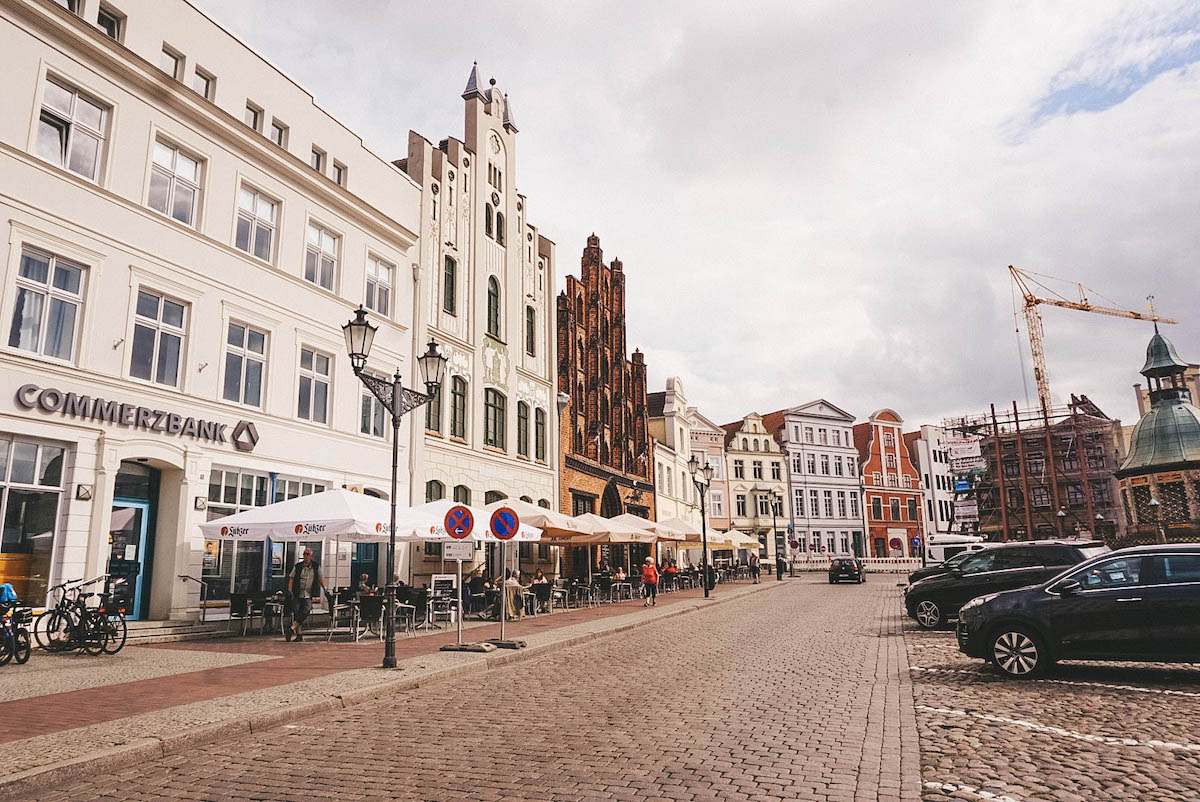
A Brief History of Wismar, Germany
The first documented mention of the Town of Wismar was in 1229. During the Thirty Years War, the Swedes drove away the German soldiers from Wismar. After the war ended, the town passed into the hands of the Swedes.
Under Swedish rule, Wismar was expanded and it became the largest fortress in Europe. Eventually, it was returned to the Germans in 1803 and it has remained part of Germany ever since.
Wismar was damaged by air raids in WWII, and reconstruction lasted through the 1990’s. In 2002, Wismar was added to the UNESCO World Heritage List.
Obviously, this is a very brief rundown of Wismar’s history, but I wanted to touch on the most important historic events that have shaped the town into what you see today!
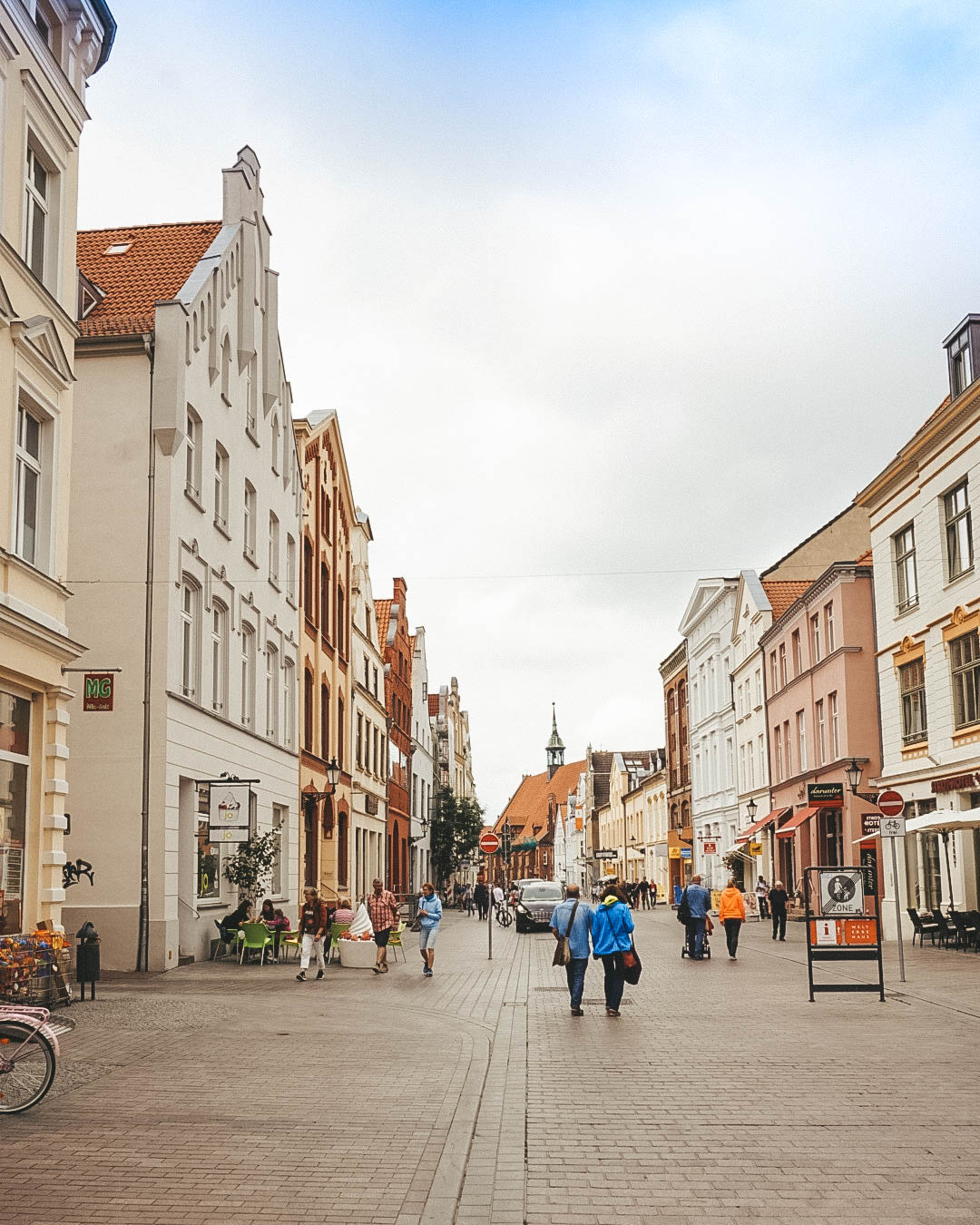
Things to Do in Wismar, Germany
I did the recommended walking tour that was listed on the free map I got from the UNESCO World Heritage House and actually really enjoyed it!
Below are my favorite things to do in Wismar, Germany in the order I recommend visiting them. (Note that I’m only recommending the sights I really enjoyed, not every single thing shown on the UNESCO map!).
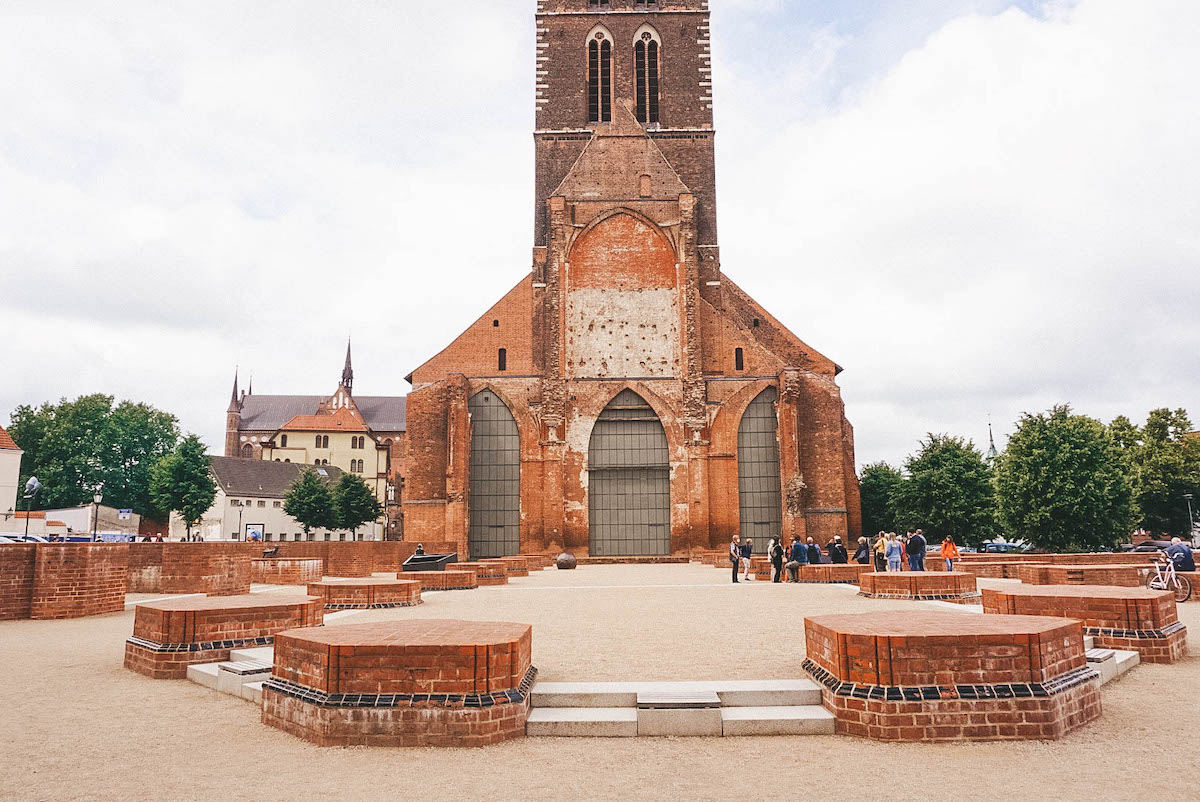
1. Church Tower of St. Mary’s
Construction on St. Mary’s Church (Marienkirche) began in 1250 and lasted until 1370. The original church was torn down and replaced with a much larger structure soon after being completed.
St. Mary’s Church was destroyed in the 12th and final air raid during WWII. The remains of the church wound up being demolished in 1960, and all that’s left today is the historic church tower. The tower is 80m tall and has a small exhibition inside.
Behind the tower is a small square. You can see the outlines of the church’s foundations, which gives you a better idea of how large it was. St. Mary’s was supposedly one of the most beautiful brick churches in Northern Germany, but now only photos remain of it.
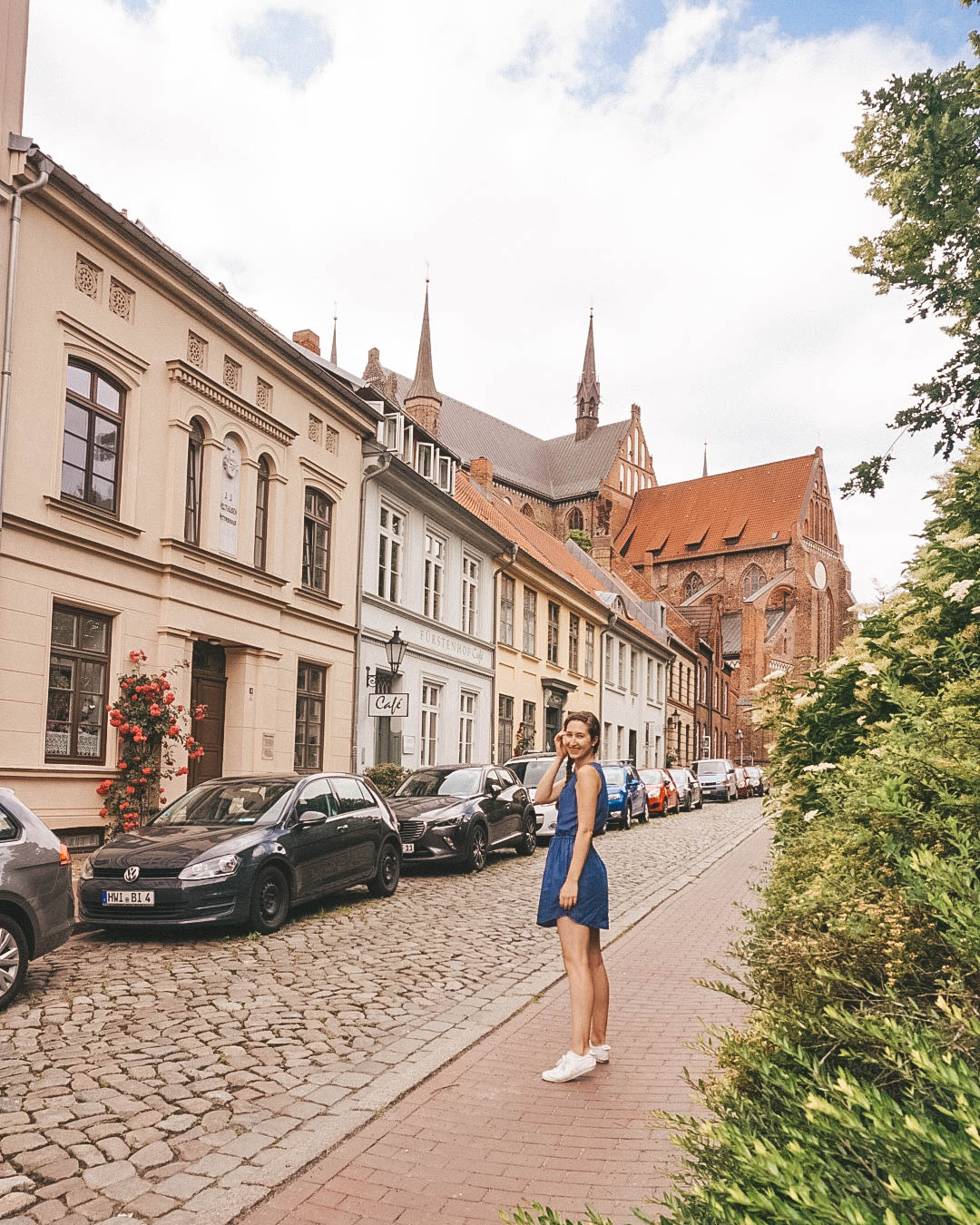
2. Church of St. George
Buckle up, because Wismar has quite a few churches worth popping your head into! The Church of St. George (St.-Georgen-Kirche) is yet another impressive red brick church that was built in the Gothic style.
The church was completed in 1594 and has traditionally been the church of craftsmen in tradesmen. Like St. Mary’s, the Church of St. George was heavily damaged in WWII. Reconstruction began in 1990, and the first service post-WWII was held in 2010.
I should note that there’s an observation deck at the Church of St. George, which has a pretty view of the town and surrounding area.
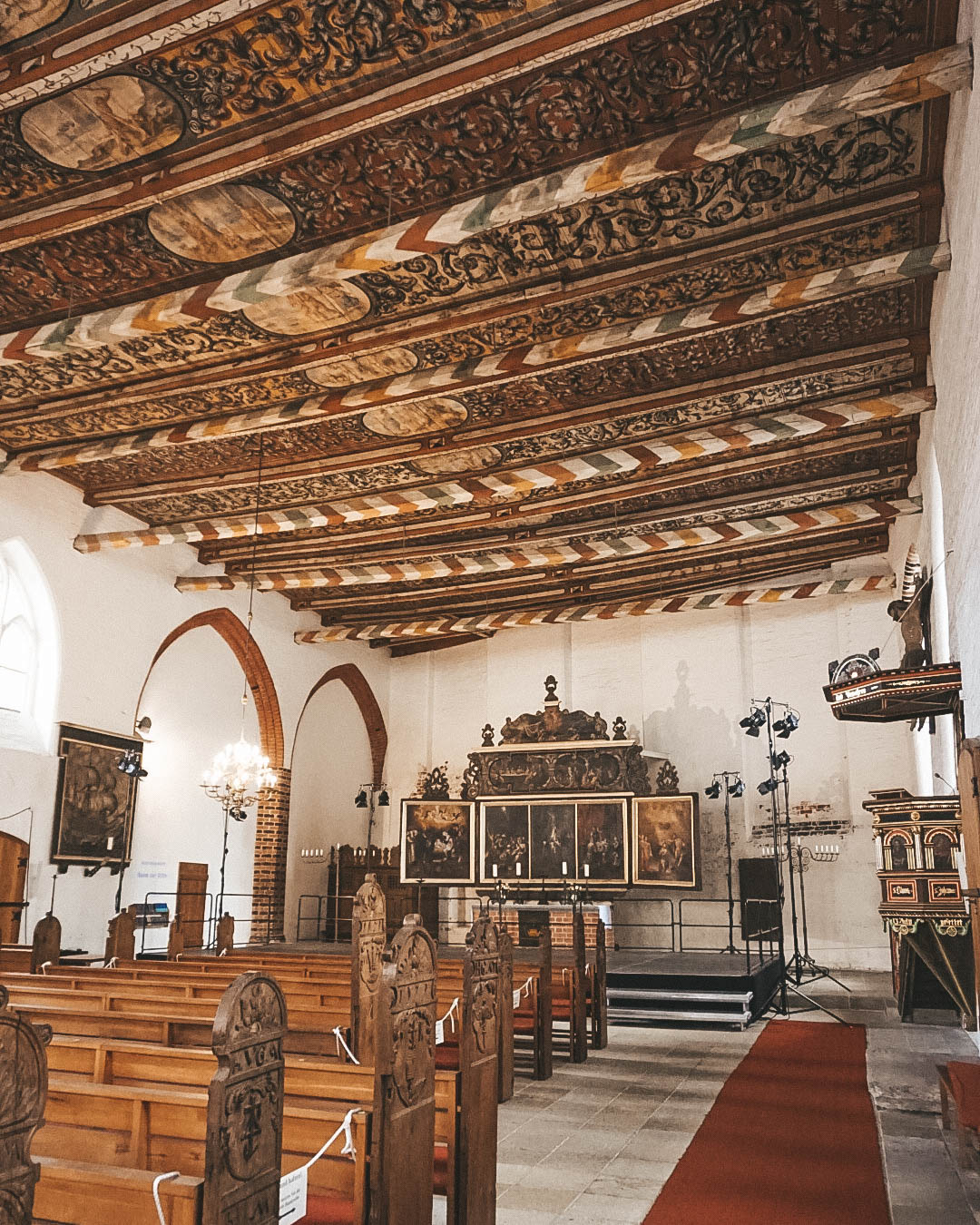
3. Church of the Holy Spirit
The Church of the Holy Spirit (Heiligen Geist Kirche) was my favorite in Wismar. It’s quite unique because there’s no nave (central aisle), unlike the other churches in town.
The Church of the Holy Spirit has a totally different feel to it — the ceilings are much lower and are flat rather than vaulted. The ceilings have also been painted with gorgeous murals that date all the way back to 1687.
After admiring the inside of the church, head around back to the courtyard. I visited on a sunny summer’s day and the blooming flowers and peaceful atmosphere took my breath away! On the other side of the courtyard is the Long House, which was once part of the church but now serves as a retirement home for the elderly.
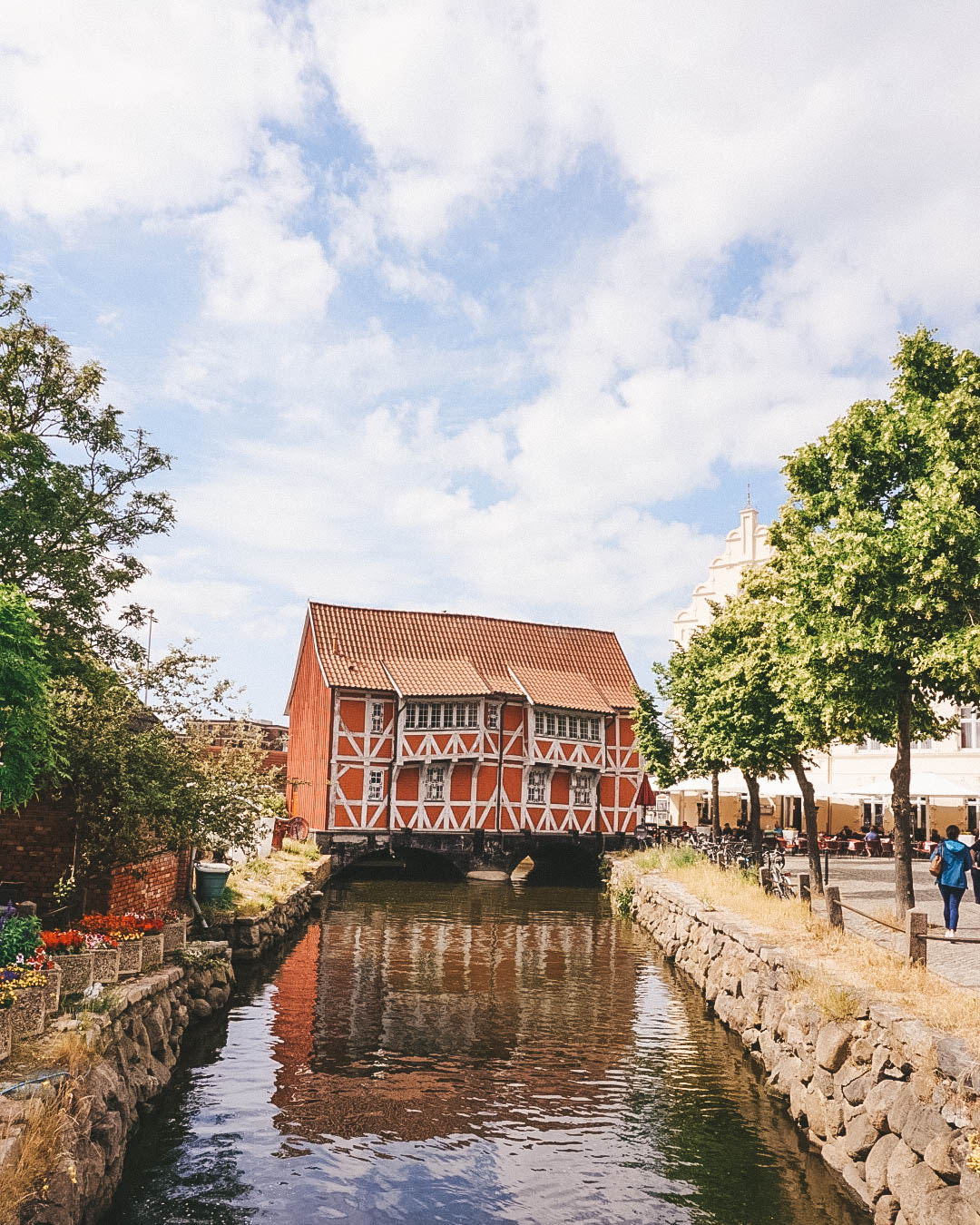
4. Gewölbe
The Gewölbe in Wismar is tough to explain. Essentially, it’s a protected building that’s lovely to look at (I mean, look at the photo above!). But there’s nothing “to do” in it, you can’t even go inside!
The Gewölbe was originally part of the city’s fortifications but has served many purposes over the years. It was once used as a place to check the quality of the wines coming into the port. Later records show it was used as a smokehouse at some point too.
The Gewölbe has been recently restored and is worth tracking down, if only to take a picture in front of it!
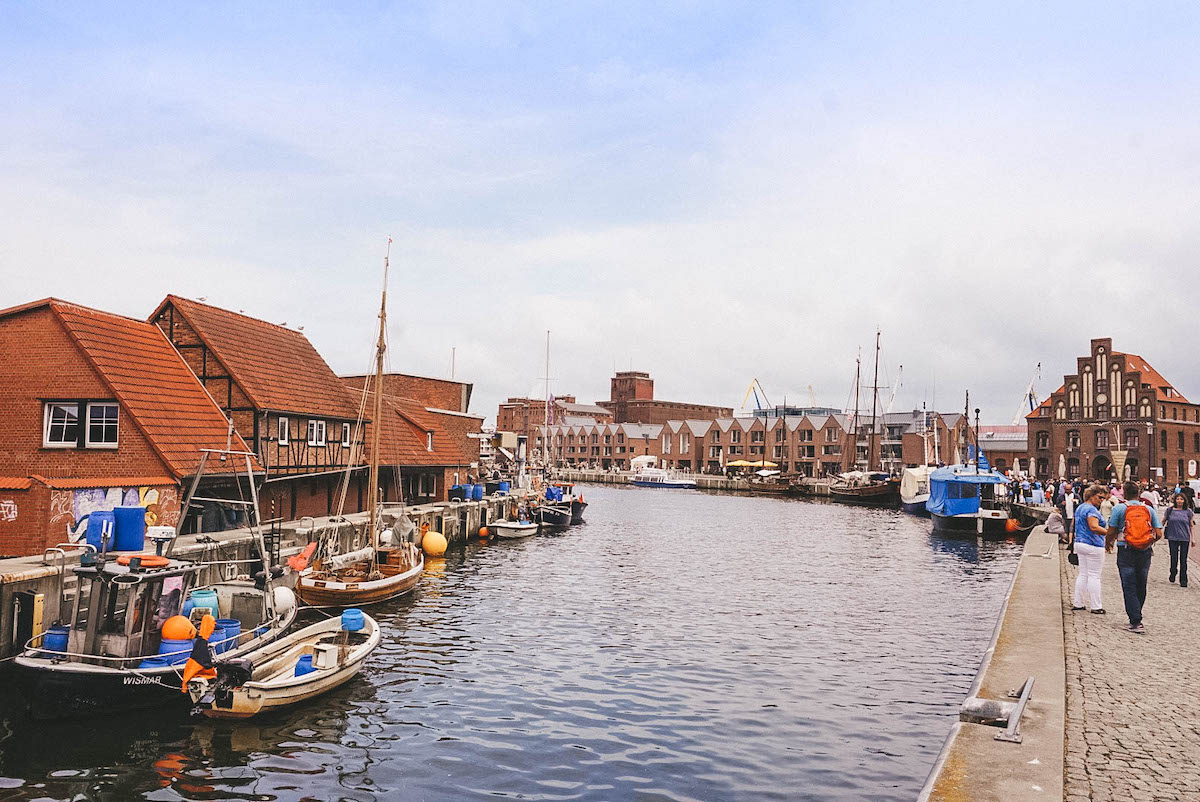
5. Old Harbor
The Old Harbor (Alter Hafen) is historically significant. Wismar was once a key port for trade with Sweden, Norway, and other Baltic nations. Fish, spices, salt, and wax were among the key goods being traded. The harbor you see today is almost the same design and location it’s had since the 1200’s.
This is the perfect spot to come for lunch. There are a few boats moored near the entrance to the harbor selling Fischbrötchen, a type of fish sandwich that this region of Germany is known for.
6. Water Gate
The Water Gate (Wassertor) is the last of the five town gates that’s still standing. It was built in 1450 in the Late Gothic style and is stunning! This is yet another pretty photo spot, but I figured I’d mention it since you have to pass through the gate to reach the Church of St. Nicholas.
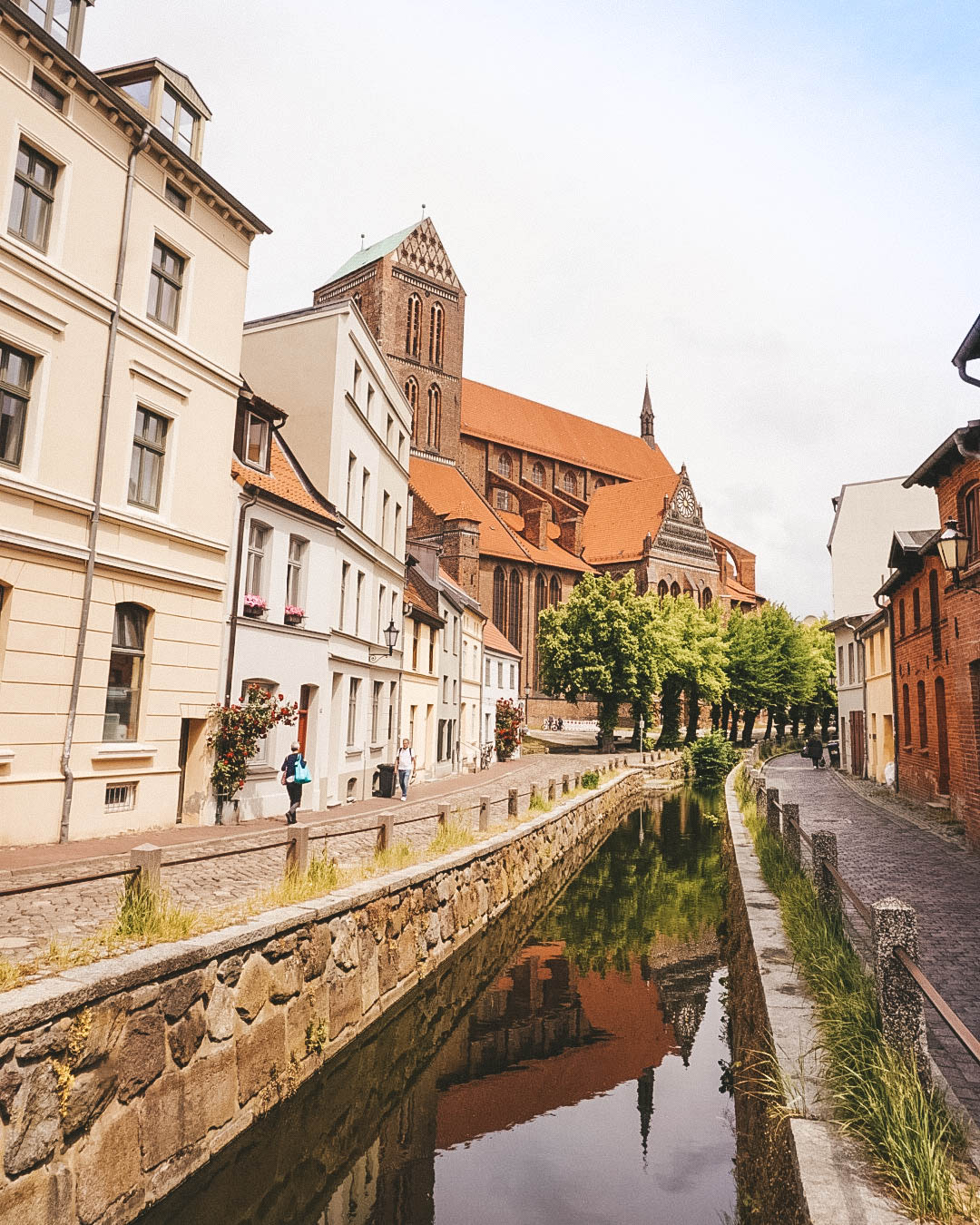
7. Church of St. Nicholas
Construction on the Church of St. Nicholas (St.-Nikolai-Kirche) began in the 14th century. St. Nicholas is the patron saint of seamen and travelers and historically been the church for sailors in the area. The nave of St. Nicholas is 37 meters high, making it the fourth highest in Germany.
Tip: One your way to the St.-Nikolai-Kirche, you’ll pass the Grube (shown above), which is one of the oldest artificial waterways in Germany. It provided Wismar with drinking water for many years!
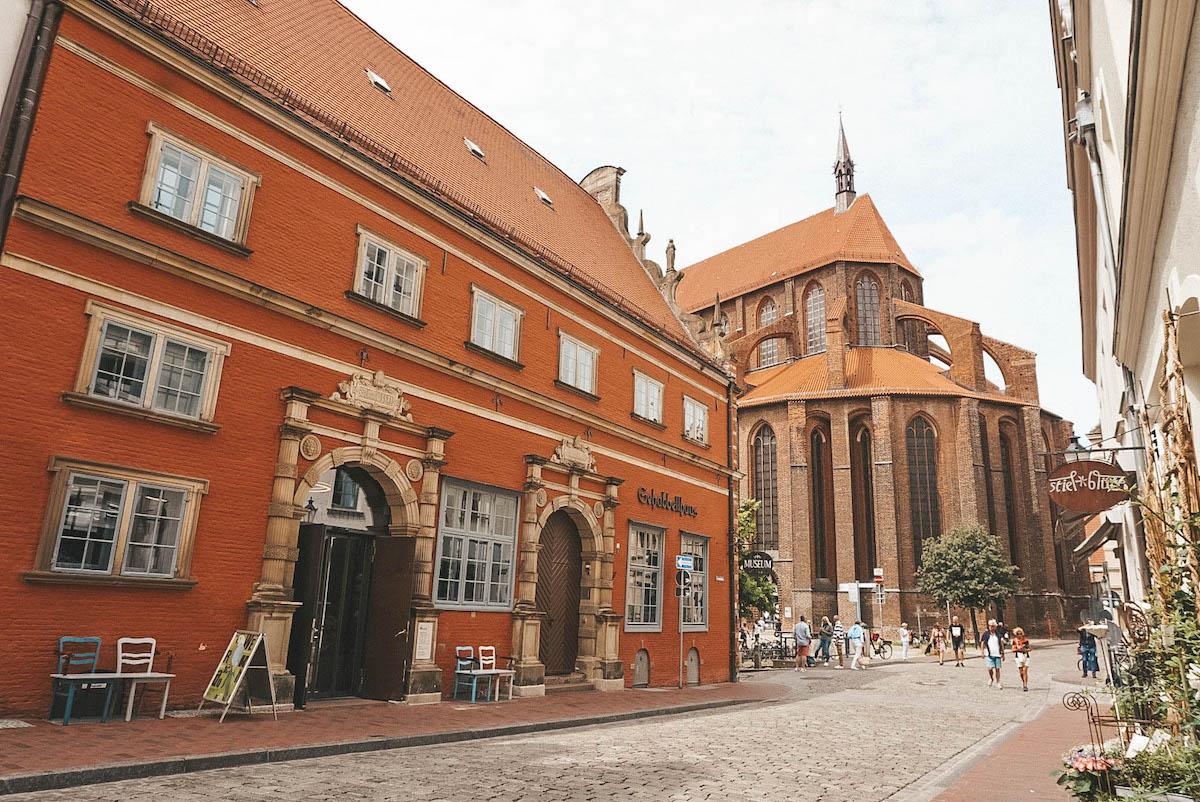
8. Schabbell
Finished in 1571, the Schabbell was intended for use by the Mayor of Wismar, Hinrich Schabbell. It was meant to be used as his home and as a brewery (smart man).
Today, the Schabbell houses the Civic History Museum. The museum has exhibits all about Wismar and the surrounding area.
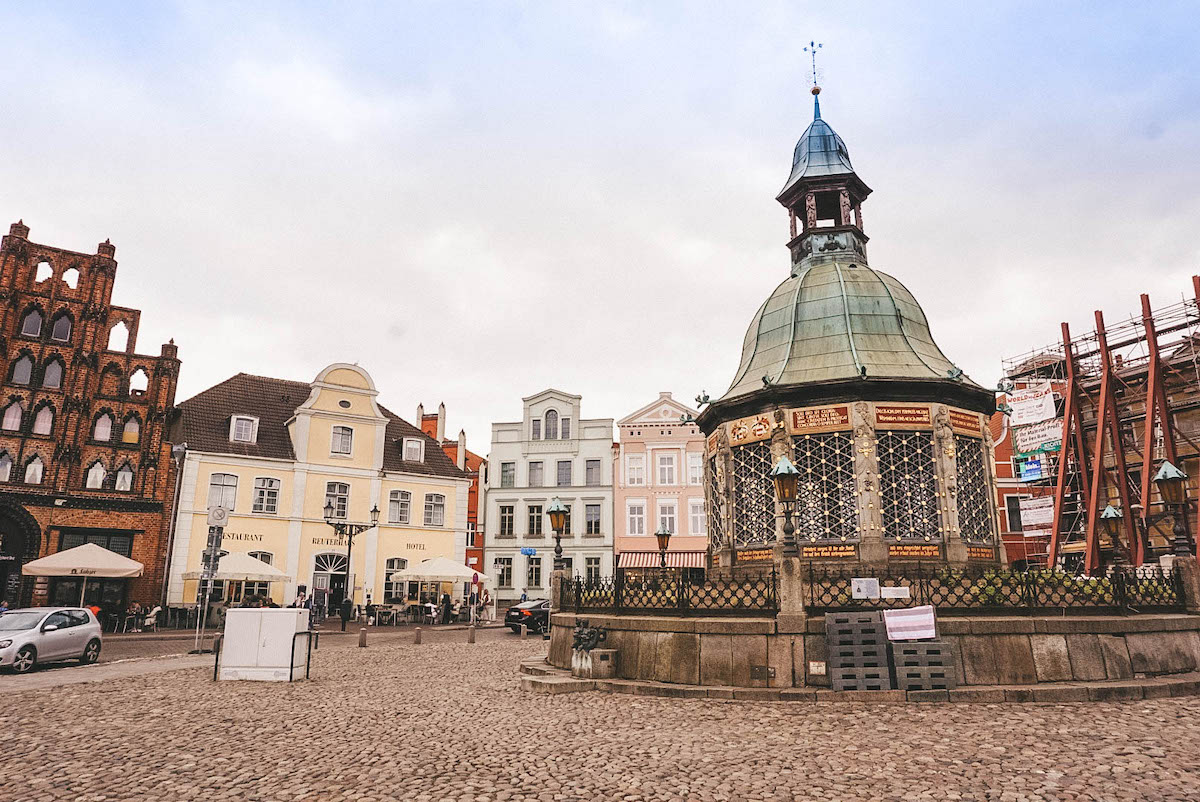
9. Market Square
Wismar’s Market Square (Marktplatz) is one of the largest in Northern Germany. Here you’ll find the city hall, plenty of cafes and restaurants, as well as the old pumping station (Wasserkunst). The pumping station was finished in 1602 and supplied the town with drinking water until 1897!
10. Karstadt
Karstadt is one of the biggest department store chains in Germany, and it just so happened to be founded in itty-bitty Wismar in 1881. The chain was founded by Rudolph Karstadt, who opened the first Karstadt store with just one employee. At the time, his business model was unusual because he made customers pay in cash!
If you’ve never been inside a Karstadt before, it’s worth going in just to say you’ve seen one of Germany’s most popular department stores. Otherwise, snap a few photos of the four-story art nouveau building and call it a day.
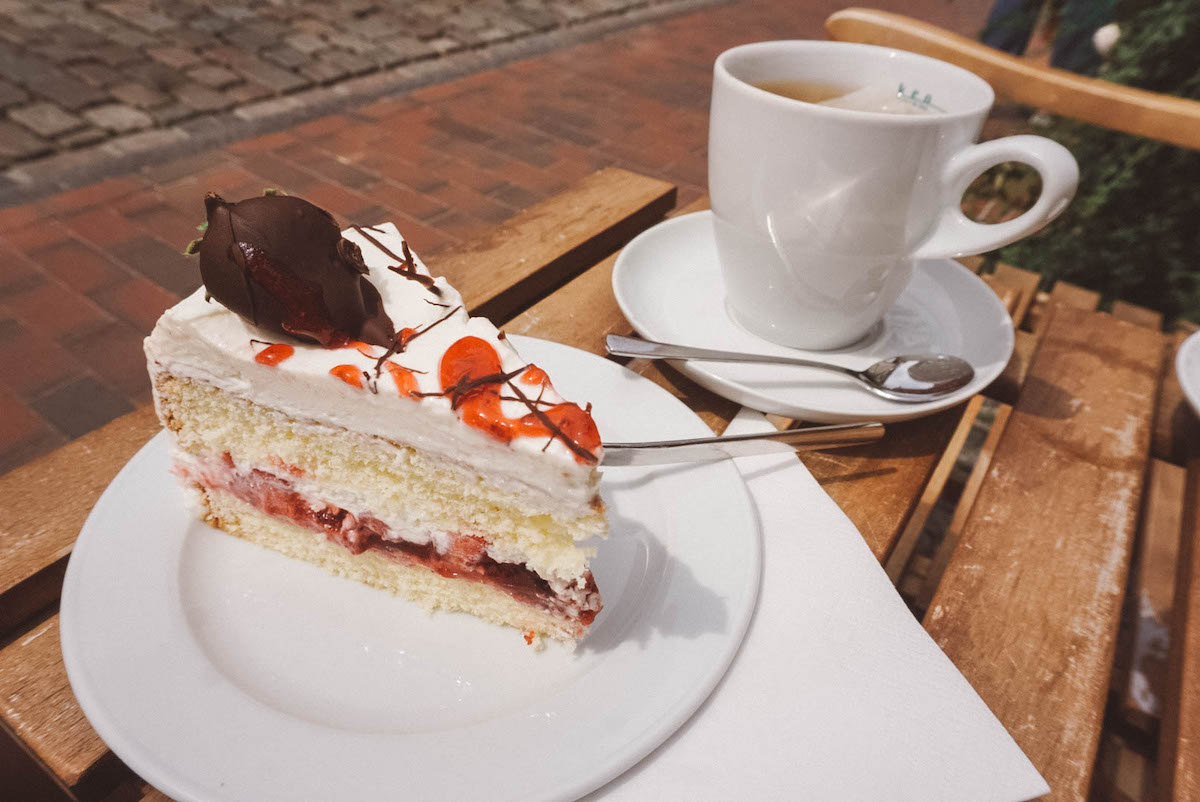
Where to Eat in Wismar
Since I only spent one day in Wismar, Germany, I can’t recommend very many restaurants. However, the few places I ate at were delicious and I figured I’d pass along the recommendation regardless.
You can order a cheap but delicious Fischbrötchen (fish sandwich) at the Old Harbor. Bring cash, as the sandwiches costs just a few Euros.
The Alter Schwede serves up hearty seafood dishes, as well as some typical German fare. The building itself is actually quite interesting as it dates back to the 1300’s. Today, there’s a restaurant on the bottom floor and a hotel up top.
For lighter fare or a mid-day cake break, I highly recommend visiting Cafe Glücklich. I sat down on a bench outside and enjoyed a slice of “Strawberry Deluxe” cake and a cup of tea. The cake here is excellent and reasonably priced.
(Also, Cafe Glücklich is located near the Pig Bridge, which is decorated with — you guessed it! — cute bronze piggies!).
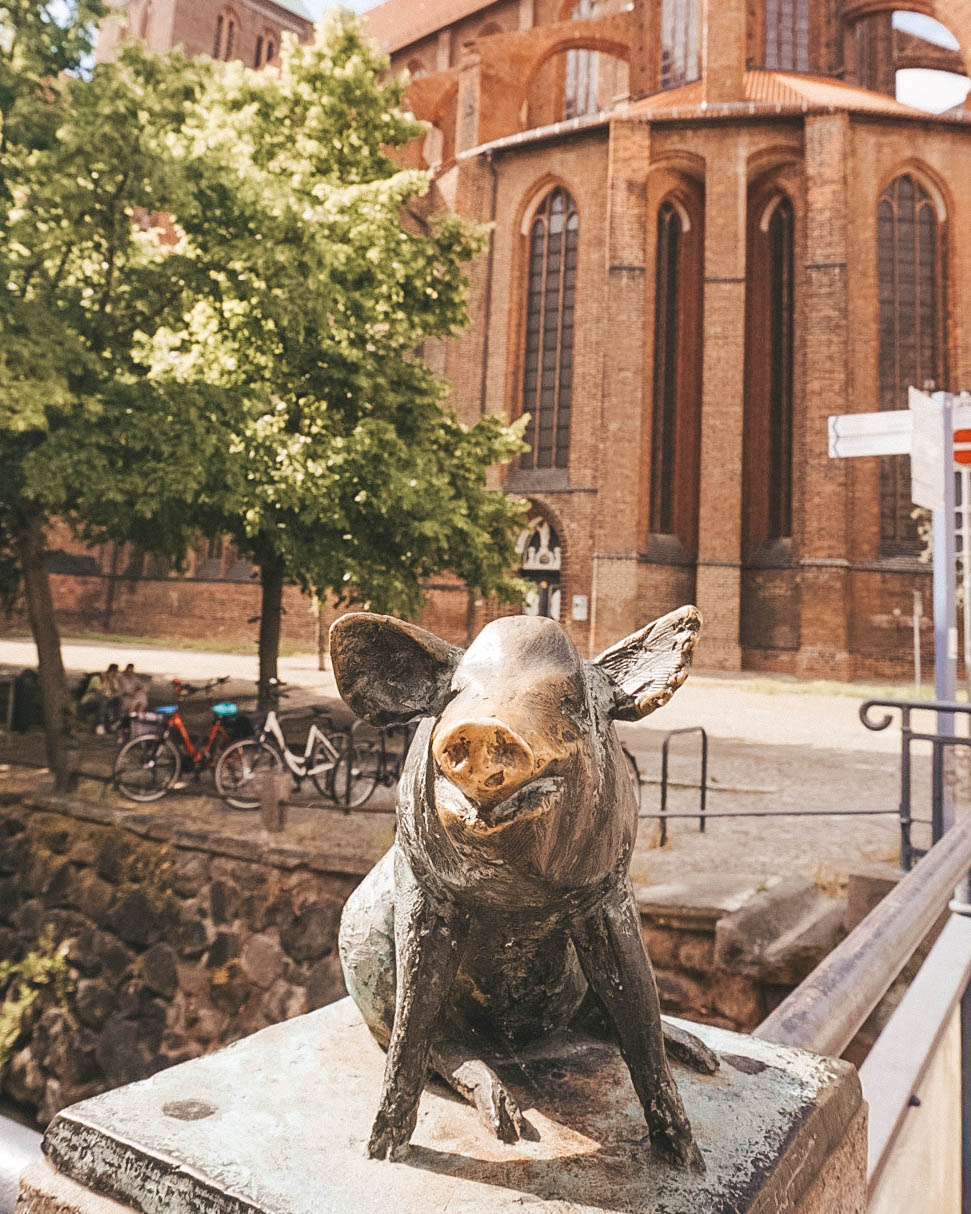
Tips for Your Visit
- Time needed: If you plan on hot footing it, 4 to 6 hours is enough time to “see it all.” I arrived in the morning around 10:30am and spent the night in Wismar, which was more than enough time to see the sights at a very leisurely pace.
- The Wismar train station is super small, and there’s nowhere to lock up your suitcases and backpacks. If you’re coming for a single day and you have baggage, you either need to drag it around with you or figure out where to stash it.
- It’s easy to get from the train station to the city center on foot.
- In fact, the entire Old Town area is walkable. Wear comfy shoes though because it’s mostly cobblestones.
- Get a map at the tourist information center. It’s free!
Does This Small Town in Germany Make Your Bucket List?
Phew! For such a small town, I didn’t think I’d have so much to write about it. But when a place is steeped in this much history, I want to give it as much TLC as needed to do it justice in a blog post.
If you can’t already tell, I LOVED my day in Wismar. It was the perfect day trip destination and I was really wowed by this medieval town in Germany.


Leave A Reply!